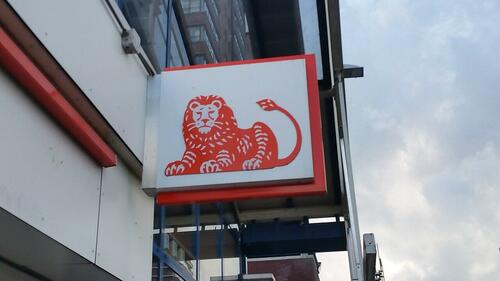ING Bank: This Gold Rally Is “Just Getting Started”
Authored by Mike Maharrey via Money Metals,
ING Bank has revised its short and midterm gold price forecast higher, saying the gold rally is “just getting started.”
The Dutch financial group cites the prospect of a Federal Reserve rate-cutting cycle, geopolitical risks, and uncertainty going into the presidential election as potential catalysts to drive gold to new record highs. The report also noted several bullish trends supporting the gold price.
ING now projects gold to average $2,700 an ounce in 2025.
According to ING, the “most anticipated” Federal Reserve rate cut in decades is by far the biggest factor driving the current gold market.
During his recent Jackson Hole speech, Federal Reserve Chairman Jerome Powell gave the clearest indication yet that rate cuts are on the horizon saying, “The time has come for policy to adjust. The direction of travel is clear.”
The ING report says the only question remaining is the pace of cuts.
ING analysts note that gold is a non-yielding asset and tends to benefit from a low interest rate environment.
The Quiet Part
What the ING analysts don’t say out loud is this so-called victory over price inflation sets the stage for a return to inflationary policies.
Lowering interest rates and ending balance sheet reduction will increase the money supply, and the expansion of the money supply is, by definition, inflation.
The Fed has tightened things up just enough to slow rising prices, but it hasn’t come close to wringing the pandemic-era inflation out of the economy. The central bank pumped nearly $5 trillion into the economy through quantitative easing alone. That was on top of the credit expansion incentivized by artificially low interest rates. It has only shrunk the balance sheet by about $1.8 trillion.
In fact, the Fed never substantively shrank the balance sheet after the 2008 financial crisis despite Ben Bernanke saying, “Ultimately, at the right time, the Federal Reserve will normalize its balance sheet,” in February of 2011.
Apparently, that time has yet to come.
Meanwhile, interest rates are higher than they were, but from a historical perspective, the current rate environment is close to normal.
Today, most of the inflation created during the pandemic and the Great Recession is still sloshing around in the economy.
And now, by slowing balance sheet reduction and signaling interest rate cuts, the Fed is telling you it plans to ramp up the inflation machine.
ING doesn’t mention any of this, and yet it still projects a bullish future for gold!
Bullish Indicators
ING analysts do note some other factors supporting gold, including election uncertainty in the U.S. and geopolitics. They anticipate further safe-haven demand due to the ongoing war in Ukraine and tensions in the Middle East.
Meanwhile, there are several strong and getting stronger demand sources in the gold market.
The ING report notes central bank gold buying ramped up in July.
Globally, central banks added a net 37 tons of gold to their holdings in July, according to the latest data compiled by the World Gold Council (WGC). It was a 206 percent month-on-month increase and the highest level of central bank gold purchases since January.
This came on the heels of record central bank gold purchases through the first half of the year.
The report also pointed out that gold has started flowing into gold-backed ETFs. Funds in every region reported an increase in gold holdings in August with Western-based ETFs leading the way. It was the fourth straight month of global net inflows. According to ING, “Investor holdings in gold ETFs generally rise when gold prices gain, and vice versa. However, gold ETF holdings have been in decline for much of 2024, while spot gold prices have hit new highs. ETF flows finally turned positive in May.”
COMEX total net longs have also continued to rise, charting a 17 percent month-on-month increase as of the end of August. It was the highest month-end level since February 2020.
Given all of these bullish factors, ING projects gold to average $2,580 in the fourth quarter. That would boost the 2024 average to $2,388, with that average rising by more than 13 percent next year.
ING Bank photo from Wikimedia Commons and used under a Creative Commons License.
Tyler Durden
Thu, 09/12/2024 – 09:20
via ZeroHedge News https://ift.tt/GtLOVPh Tyler Durden
